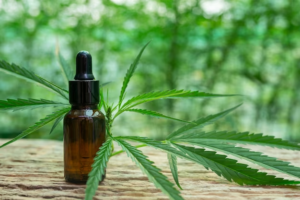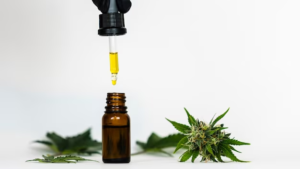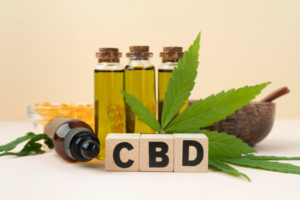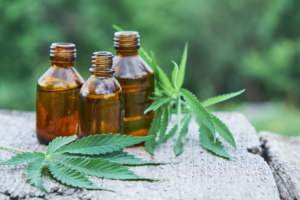
Many individuals revel in the benefits of CBD vaping, considering its rapid delivery mechanism. Yet, there lies a looming concern: “How long does CBD vape stay in your body?” Especially if a drug test is on the horizon. In this discourse, we’ll untangle this mystery and furnish other vital insights.
Duration of CBD Vape Presence in the Body
CBD, or cannabidiol, is among the popular cannabinoids derived from the cannabis or hemp plant. When it comes to understanding how long CBD from vaping stays in the system, several factors play into the equation.
Vaping and Rapid Absorption:
The process of vaping involves inhaling a vaporized form of CBD, which is quickly absorbed by the delicate alveoli in the lungs. This method ensures that CBD enters the bloodstream almost immediately, leading to rapid onset of effects. Compared to other consumption methods, vaping can produce effects within minutes. This rapid absorption, however, doesn’t necessarily mean that CBD will exit your system any faster than if consumed through other means.
Typical Duration in the System:
Generally, CBD can remain in the blood for anywhere from 2 to 5 days after vaping, but this can vary based on individual factors. It’s worth noting that while the active effects of CBD might wear off in a few hours, the compound itself lingers in the system.
Individual Variability:
How long CBD remains detectable in your body depends on multiple personal factors. For instance:
- Metabolism: Those with a faster metabolic rate will process and eliminate CBD quicker than someone with a slower metabolism.
- Frequency of Use: Regular, daily users might find that CBD accumulates in their system, possibly taking a longer time to clear out entirely.
- Dosage: Higher doses of CBD naturally take longer to get processed out of the body compared to smaller doses.
Concerns Regarding Drug Testing
While CBD itself isn’t psychoactive and doesn’t give the “high” sensation, the trace amounts of THC in some products can cause concerns. It’s this small percentage of THC that could potentially show up in drug tests, making some consumers anxious.
Factors Affecting the Retention of CBD
The retention of CBD in one’s system is influenced by a multitude of elements, both intrinsic to the individual and external. Here’s a more in-depth look:
- Body Composition: The physical makeup of an individual, including factors such as body mass index (BMI), weight, and the amount of body fat, plays a critical role. Since CBD is lipophilic, those with higher fat percentages might retain CBD for a longer duration.
- Diet: The type of foods you consume can affect how swiftly CBD is metabolized. Diets rich in fatty acids might increase the body’s absorption of CBD. On the other hand, a high-fiber diet might aid in quicker elimination, as it can assist in the removal of waste products.
- Dosage: Naturally, higher doses of CBD will take a more extended period for the body to process compared to smaller doses.
- Frequency of Use: Regular users of CBD might find the compound accumulates in the body, leading to a longer retention time. Occasional users might process it out more swiftly.
- Method of Administration: While vaping ensures rapid absorption of CBD, other methods like edibles or topical might result in slower absorption and retention times.
- Hydration Levels: Staying well-hydrated can influence the rate at which the body processes and eliminates compounds, including CBD. Proper hydration can aid in the quicker elimination of CBD through urine.
- Lifestyle: Active individuals, especially those who engage in regular exercise, might metabolize CBD more swiftly. Physical activity stimulates fat burning, which could lead to faster release and elimination of CBD stored in fat cells.
- Metabolism: An individual’s metabolic rate, affected by age, genetic factors, and overall health, dictates how quickly substances are processed in the body. A faster metabolism will typically result in shorter retention times for CBD.
In essence, the retention of CBD is a complex interplay of numerous factors. It’s essential to recognize that each individual’s experience with CBD retention will be unique, given the variability in these influencing factors.
Speeding Up the Elimination Process
For those who are concerned about the lingering presence of CBD in their system, there are some proactive measures you can take to accelerate the elimination process:
- Hydration: Drinking ample water is fundamental. This aids in flushing out toxins and other substances, including CBD, from the body. When the body is well-hydrated, the kidneys work more efficiently in eliminating waste products through urine.
- Exercise: Engaging in regular cardiovascular workouts and strength training can stimulate fat cells, releasing stored compounds like CBD. Moreover, sweating during intensive workouts can also contribute to eliminating toxins.
- Dietary Choices: Consuming a diet rich in fiber will enhance the digestive system’s efficiency, aiding in faster elimination of waste products. Incorporating foods like whole grains, fruits, and vegetables can help.
- Activated Charcoal: Some believe that taking activated charcoal can help in detoxifying and speeding up the elimination process. It binds to various compounds, aiding in their quicker removal. However, one should consult a healthcare professional before using activated charcoal for this purpose.
- Sauna: Sweating it out in a sauna can be another method to facilitate the expulsion of toxins. While the direct impact on CBD elimination might be minimal, it can still aid in general detoxification.
- Reduce CBD Intake: If you’re keen on speeding up the CBD elimination process, it might be prudent to reduce or temporarily halt your CBD intake. This gives the body a chance to process and eliminate existing CBD content without new additions.
- Holistic Practices: Some people find holistic practices like yoga, meditation, and deep-breathing exercises effective in enhancing their body’s detoxification processes. While their direct impact on CBD elimination is still under research, they undeniably offer overall health benefits.
Understanding Disposable Vape’s Presence in Your System
Nicotine, as opposed to CBD, behaves differently in the body. While its presence diminishes rapidly, the byproducts can linger, sometimes detectable for days or even weeks, depending on various factors.
Testing Methods: A Breakdown
When it comes to the world of CBD, ensuring the quality and purity of the product is paramount. This is not only to guarantee the therapeutic benefits of CBD but also to ensure consumers’ safety. To achieve this, rigorous testing methods are employed. Here’s a breakdown of the most common testing methods used in the CBD industry:
- High-Performance Liquid Chromatography (HPLC)
HPLC is one of the most commonly employed methods in the CBD industry. This method separates compounds to test their concentration. By using a liquid solvent, the CBD product is broken down into its individual components. Once the components are separated, they can be measured to determine their concentration. This method is highly effective in determining the exact percentage of CBD in a product.
- Gas Chromatography (GC)
Similar to HPLC, gas chromatography separates compounds to test them. However, in this method, the sample is vaporized and combined with a carrier gas. It’s then passed through a column that separates the compounds. GC is primarily used to test for volatile substances.
- Mass Spectrometry (MS)
Often used in conjunction with HPLC or GC, mass spectrometry provides an analysis of the compound’s molecular weight. It works by ionizing chemical compounds and sorting the ions based on their mass-to-charge ratio. This method is incredibly sensitive and can detect even trace amounts of contaminants.
- Thin-Layer Chromatography (TLC)
TLC is a simpler and more cost-effective method compared to the others. It involves placing a sample on a solid stationary phase and allowing it to react with a solvent. As the solvent moves, it separates the compounds in the sample. TLC is a qualitative method and is often used for initial screening.
- Nuclear Magnetic Resonance Spectroscopy (NMR)
NMR uses the magnetic properties of certain atomic nuclei to determine the physical and chemical properties of atoms or the molecules they are contained within. It’s a robust method for understanding the molecular composition and structure of the analyzed compound.
- Microbiological Testing
Beyond just checking for the CBD concentration, products are also tested for harmful pathogens. Microbiological tests identify any bacteria, mold, or fungi that might be present in the CBD product.
Comparative Table: CBD Vape vs Traditional Consumption Methods
| Criteria | CBD Vape | Traditional Methods (Edibles, Oils) |
| Onset of Effects | Immediate (within minutes) | 30 minutes to 2 hours |
| Duration of Effects | 2-3 hours | 4-6 hours |
| Bioavailability | 34-56% (higher due to lungs’ absorption) | 5-20% (digestive system losses) |
| Convenience | Portable, discreet | Might need preparation or be less discreet |
| Dosage Control | Precise (based on puffs) | Precise (based on servings) |
| Potential for Lung Impact | Possible concerns | None |
| Detectability in Tests | 2 days to a week | Typically, a week or more |
Conclusion
Whether you’re vaping CBD or consuming it through traditional methods, understanding its behavior in the body is crucial, especially if drug testing is a concern. While vaping offers a fast-acting method, each method has its own set of pros and cons. Making an informed decision based on thorough research and consultation with health professionals is always advised.
FAQ
1. What is CBD?
CBD, or cannabidiol, is one of the many compounds found in cannabis plants. Unlike THC (tetrahydrocannabinol), which is the main psychoactive compound in marijuana, CBD doesn’t produce a “high” effect and has gained popularity for its therapeutic benefits.
2. Why do people vape CBD?
Vaping CBD is seen as an efficient way to deliver CBD to the body quickly. Many users report rapid relief from anxiety, pain, and inflammation when vaping CBD compared to other methods of consumption.
3. How long does it take for CBD to affect the body when vaped?
CBD, when vaped, enters the bloodstream directly through the lungs, providing almost instantaneous effects. Most users report feeling the effects within minutes.
4. Is vaping CBD safe?
While CBD itself has been deemed relatively safe for use, concerns arise from the additives and contaminants that might be present in vape liquids. Always ensure you’re purchasing from reputable sources and consult your doctor if you have health concerns.
5. Will vaping CBD show up on a drug test?
Most drug tests are designed to detect THC, not CBD. However, some CBD products may contain trace amounts of THC which might result in a positive test. It’s essential to purchase third-party tested CBD products that guarantee THC content below the legal limit.





